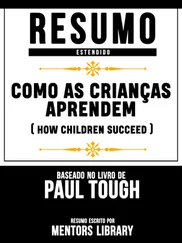Scientists in rat labs are always picking up baby rats to examine them or weigh them, and one day about ten years ago, researchers in Meaney’s lab noticed a curious thing : When they put the pups back in the cages after handling them, some dams would scurry over and spend a few minutes licking and grooming their pups. Others would just ignore them. When the researchers examined the rat pups, they discovered that this seemingly insignificant practice had a distinct physiological effect. When a lab assistant handled a rat pup, researchers found, it produced anxiety, a flood of stress hormones, in the pup. The dam’s licking and grooming counteracted that anxiety and calmed down that surge of hormones.
Meaney and his researchers were intrigued, and they wanted to learn more about how licking and grooming worked and what kind of effect it had on the pups. So they kept watching the rats, spending long days and nights with their faces pressed up against the Plexiglas, and after many weeks of careful observation, they made an additional discovery: different mother rats had different patterns of licking and grooming, even in the absence of their pups’ being handled. So Meaney’s team undertook a new experiment, with a new set of dams, to try to quantify these patterns. This time, they didn’t handle any of the pups. They just closely observed each cage, an hour at a time, eight sessions a day, for the first ten days of the pups’ lives. Researchers counted every instance of maternal licking and grooming. And after ten days, they divided the dams into two categories: the ones that licked and groomed a lot, which they labeled high LG, and the ones that licked and groomed a little, which they labeled low LG.
The researchers wanted to know what the long-term effects of these variations in parenting behavior might be. So when the pups were twenty-two days old, they were weaned, separated from their mothers, and housed for the rest of their adolescence with same-sex siblings. When the pups were fully mature, about a hundred days old, Meaney’s team gave them a series of tests that compared the offspring of the high-licking-and-grooming dams with the rats that hadn’t received a lot of licking and grooming as pups.
The main evaluation they used was something called an open-field test, a common procedure in animal-behavior studies: A rat is placed in a large, round, open box for five minutes and allowed to explore at will. Nervous rats tend to stay close to the wall, circling around and around the perimeter; bolder rats dare to venture away from the wall and explore the whole field. In a second test, designed to measure fearfulness, hungry rats were placed in a new cage for ten minutes and offered food. Anxious rats, like jittery guests at a fancy dinner party, tend to take longer to work up the nerve to try any food, and they eat less than the calmer, more confident rats do.
On both tests, the difference between the two groups was striking. The rats who hadn’t been licked and groomed much as pups spent, on average, fewer than five seconds of their five minutes daring to explore the inner part of the open field; the rats who had been licked and groomed a lot as pups spent, on average, thirty-five seconds in the inner field—seven times as long. In the ten-minute food test, high-LG rats began eating, on average, after just four tentative minutes, and they ate for more than two minutes in total. The low-LG rats took, on average, more than nine minutes to start eating, and once they did, they ate for only a few seconds.
The researchers ran test after test, and on each one, the high-LG offspring excelled: They were better at mazes. They were more social. They were more curious. They were less aggressive. They had more self-control. They were healthier. They lived longer. Meaney and his researchers were astounded. What seemed like a tiny variation in early mothering style, so small that decades of researchers hadn’t noticed it, created huge behavioral differences in mature rats, months after the licking and grooming had taken place. And the effect wasn’t just behavioral; it was biological too. When Meaney’s researchers examined the brains of the adult rats, they found significant differences in the stress-response systems of the high-LG and low-LG rats, including big variations in the size and shape and complexity of the parts of the brain that regulated stress.
Meaney wondered if a dam’s licking-and-grooming frequency was just a proxy for some genetic trait that was passed on from mother to child. Maybe nervous dams produced temperamentally nervous pups, and those dams also coincidentally happened to be less inclined to lick and groom. To test that hypothesis, Meaney and his researchers did a number of cross-fostering experiments, in which they removed pups at birth from a high-LG dam and put them in the litter of a low-LG dam, and vice versa, in all kinds of combinations. Whatever permutation they chose, though, however they performed the experiment, they found the same thing: what mattered was not the licking-and-grooming habits of the biological mother; it was the licking-and-grooming habits of the rearing mother. When a pup received the comforting experience of licking and grooming as an infant, it grew up to be braver and bolder and better adjusted than a pup who hadn’t, whether or not its biological mother was the one who had done the licking and grooming.
Meaney and other neuroscientists have found intriguing evidence that something like the LG effect takes place in humans as well. In collaborations with geneticists over the past decade, Meaney and his researchers have been able to demonstrate that a dam’s licking and grooming doesn’t affect her pups just on the level of their hormones and brain chemicals. It goes much deeper than that, all the way down to the control of gene expression. Licking and grooming a rat pup in its earliest days of life affects the way certain chemicals are affixed to certain sequences on the pup’s DNA, a process known as methylation. Using gene-sequencing technology, Meaney’s team was able to establish which part of a pup’s genome got “switched on” by licking and grooming, and it turned out to be the precise segment that controlled the way the rat’s hippocampus would process stress hormones in adulthood.
That discovery alone caused a sensation in the world of neuroscience. It showed that, in rats at least, subtle parental behaviors had predictable and long-lasting DNA-related effects that could actually be traced and observed. What made the discovery relevant beyond the rodent world was an experiment that Meaney’s team then went on to do using the brain tissue of human suicides —some from suicides who had been maltreated and abused in childhood, and some from suicides who had not. The researchers sliced into the brain tissue and examined the sites on the DNA that are related to the stress response in the hippocampus—the human equivalent of the rat DNA sequence that was switched on by early parental behavior, profoundly affecting the rat’s future reactions. They discovered that the suicides who had been maltreated and abused in childhood had experienced methylation effects on that exact segment of their DNA, though the abuse had the opposite effect of licking and grooming: it had switched off the healthy stress-response function that licking and grooming had switched on in the rat pups.
The suicide study is definitely intriguing, but on its own, it does not amount to conclusive evidence about the effect of parenting on stress function in humans. But more solid evidence is beginning to emerge, thanks to some innovative studies that build on Meaney’s research. Clancy Blair, a researcher in psychology at NYU, has been conducting a large-scale experiment in which he has followed almost from birth a group of more than twelve hundred infants. Every year or so, beginning when the infants were just seven months old, Blair measured the way their cortisol levels spiked in reaction to stressful situations—a simple way to evaluate how well a child is handling stress, kind of a bare-bones index of allostatic load. Blair found that environmental risks, like family turmoil and chaos and crowding, did have a big effect on children’s cortisol levels—but only when their mothers were inattentive or unresponsive. When mothers scored high on measures of responsiveness , the impact of those environmental factors on their children seemed almost to disappear. High-quality mothering, in other words, can act as a powerful buffer against the damage that adversity inflicts on a child’s stress-response system, much as the dams’ licking and grooming seemed to protect their pups.
Читать дальше



![Коринн МакКей - How to Succeed as a Freelance Translator [calibre 3.46.0]](/books/402693/korinn-makkej-how-to-succeed-as-a-freelance-transl-thumb.webp)








